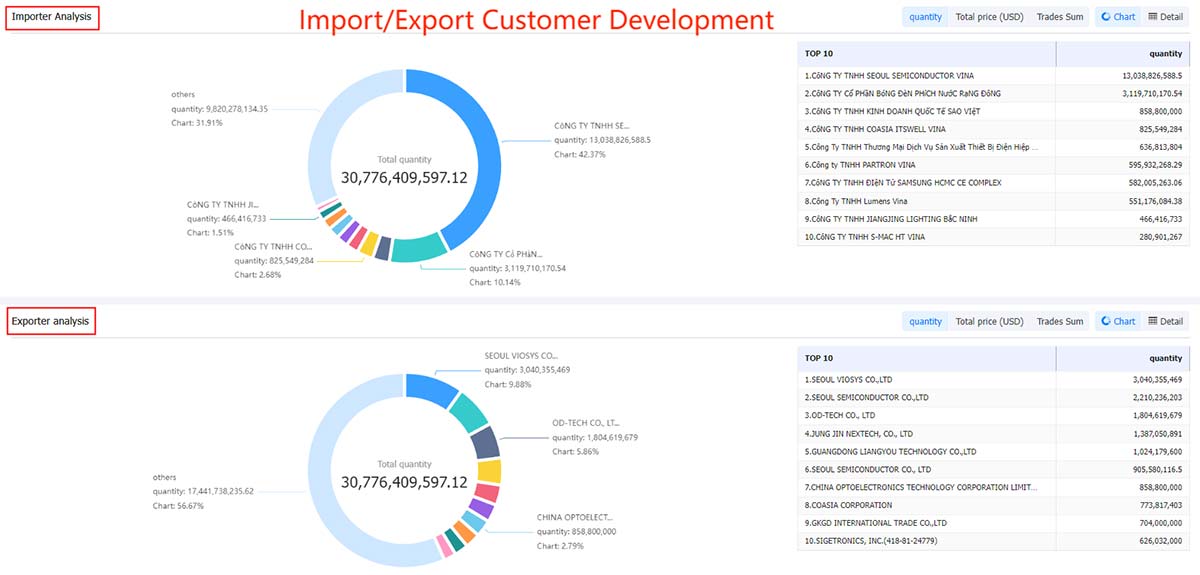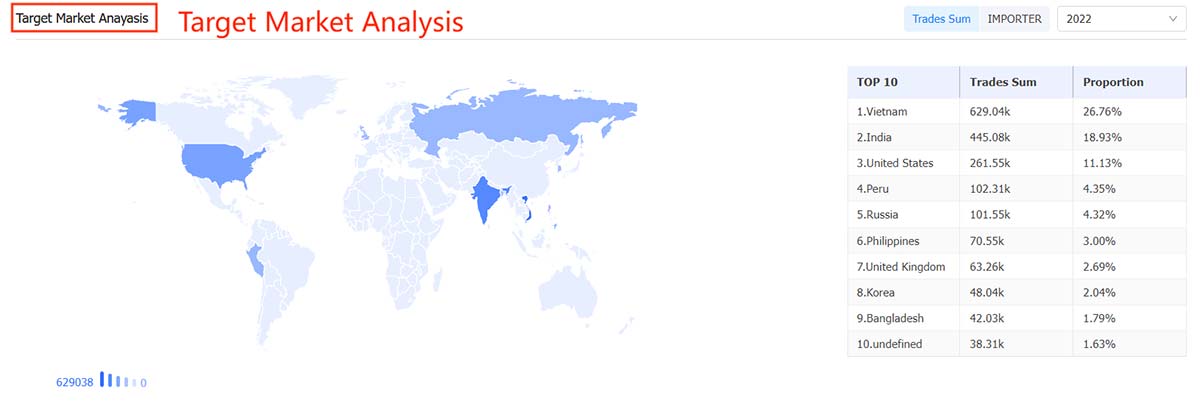 Export News
Export News
 04-11-2024
04-11-2024
Nestled in the Persian Gulf, the Kingdom of Bahrain exported products worth $12.4 billion in 2023. This figure represents a decrease of 12.4% from five years prior, when Bahrain's export totaled $14.2 billion in 2019. In comparison to the previous year, Bahrain's export revenue dropped sharply by 44.2%, falling from $22.3 billion in 2022.
Recent data indicates that a significant 72.3% of Bahrain's exports were sent to a select group of countries, with Saudi Arabia receiving 23.5% of the total, followed by the United Arab Emirates at 14.3%, and the United States at 8.4%. Other notable partners include the Netherlands (4.4%), Egypt (3.7%), India (3.1%), Oman (3.1%), Türkiye (3%), Kuwait (2.5%), Algeria (2.4%), Italy (2.1%), and South Korea (1.9%).
From a continental perspective, 61.9% of Bahrain's export value went to Asian nations, while 14.7% was exported to Europe. Additionally, 11.0% was shipped to African markets. Smaller shares were directed to North America (9.6%), Latin America (1.6%, excluding Mexico but including the Caribbean), and Oceania (1.1%, primarily Australia and New Zealand).
With a population of approximately 1.577 million, Bahrain's $12.4 billion in exports equates to about $7,900 per resident. This figure represents a decline from the $14,400 per capita in 2022.

Bahrain's Top 10 Export Products
The leading export categories from Bahrain in 2023, along with their respective contributions to total exports, are as follows:
· Aluminum: $4.8 billion (38.3%)
· Ores, slag, ash: $1.8 billion (14.8%)
· Machinery, including computers: $748.4 million (6%)
· Iron and steel: $644.9 million (5.2%)
· Dairy products, eggs, honey: $504.7 million (4.1%)
· Articles of iron or steel: $482.8 million (3.9%)
· Gems and precious metals: $410.8 million (3.3%)
· Vehicles: $397.8 million (3.2%)
· Fertilizers: $290.5 million (2.3%)
· Plastics and plastic products: $221.3 million (1.8%)
Together, these top 10 export categories account for 83% of Bahrain's total export value. Notably, vehicles saw the fastest growth among these categories, increasing by 43.7% from 2022 to 2023. Gems and precious metals also showed strong performance with a 15.7% increase, primarily due to jewelry sales. In contrast, fertilizers experienced the most significant decline, dropping by 32% year over year.
At the detailed 4-digit Harmonized Tariff System code level, Bahrain's most valuable exports were unwrought aluminum (26.8% of total exports), iron ores and concentrates (14.8%), and aluminum wire (5.6%), among others.
Leading Bahraini Export Companies
According to Tendata, the top 10 exporting companies in Bahrain by volume in 2023 are:
1. CMS JANT VE MAKİNA SANAYİİ ANONİM ŞİRKETİ · 63.66%, $4.11 million
2. TUSAŞ MOTOR SANAYİ A Ş · 25.27%, $1.63 million
3. MARMARA METAL MAMULLERİ TİCARET ANONİM ŞİRKETİ · 3.83%, $0.25 million
4. KABLOMAR KABLO HAM MADDELERİ SANAYİ VE TİCARET LİMİTED ŞİRKETİ · 1.16%, $0.08 million
5. TELATEKS DIŞ TİCARET VE KOMPOZİT SANAYİ ANONİM ŞİRKETİ · 1.13%, $0.07 million
6. KONVEYÖR BEYAZ EŞYA VE OTOMOTİV YAN SANAYİ TİCARET ANONİM ŞİRKETİ · 1.06%, $0.07 million
7. ALKO ALÜMİNYUM PROFİL PAZARLAMA SANAYİ TİCARET LİMİTED ŞİRKETİ · 0.96%, $0.06 million
8. SEYKOÇ ALÜMİNYUM PAZARLAMA VE SANAYİ TİCARET LİMİTED ŞİRKETİ · 0.66%, $0.04 million
9. CÔNG TY TNHH ENTIRE COUPLING · 0.49%, $0.03 million
10. HAVACILIK PARÇA VE SERVİSLERİ DIŞ TİCARET LİMİTED ŞİRKETİ · 0.4%, $0.03 million
In terms of macroeconomics, Bahrain's total exported goods represent an estimated 12.4% of its overall Gross Domestic Product (GDP) for 2023, valued at $100.1 billion in Purchasing Power Parity (PPP) terms. This 12.4% is a decrease from 24.8% in 2022, indicating a reduced dependency on international markets for Bahrain's economic performance.
Another important economic indicator is the unemployment rate, which averaged 6.3% in 2023, an increase from 5.4% in 2022, according to the International Monetary Fund.
Bahrain's capital, Manama, translates to "place of rest" or "place of dreams" in Arabic.
The Role of Customs Data
In global trade, it is crucial to recognize the significance of customs data. When customs data is effectively aligned with business development, it greatly enhances the volume of global trade operations. Below, Tendata will elucidate three key applications of import and export data:
1. Market Analysis
Analyzing market trends and frontiers involves assessing market demands across different regions and juxtaposing product prices. This facilitates the selection of target markets with high profitability and substantial demand. Simultaneously, by querying customs data, one can gain insights into product market distribution and changing trends, enabling timely adjustments to marketing strategies.
Tendata iTrader provides access to customs data from over 100 countries (>>>Click to GET FREE ACCESS TO CUSTOMS DATA from 100+ Countries<<<), along with business data from 198 countries and over 10 billion trade records. Through multidimensional aggregation and analysis of global market information such as buyers, suppliers, countries of origin, trading cycles, and trade ports, Tendata deeply dissects target markets. This enables the formulation of guiding marketing strategies, product strategies, and competitive strategies. It optimizes production and logistics systems, achieving precision targeting. (>>>Click to GET SAMPLE DATA ONLINE<<<)

2. Customer Development
Customer development is a widely used function that involves finding potential high-quality customers through product keywords, HS codes, or filtering based on transaction frequency, scale, traded products, and trade partners. Coupled with contact information, this approach facilitates direct engagement with buyers.
Tendata combines trade data from 218 countries, business data from 198 countries and regions, and internet data from 141 countries to create a comprehensive database. With instantaneous search results, global target customers are presented in 0.01 seconds (>>>Click to Apply for Free Trial Data<<<).

3. Customer Acquisition
Customer acquisition involves examining changes in customers' trade partners to understand whether they are engaging new suppliers and if there is a need to optimize current approaches. This can also be used to analyze peer-to-peer transactions and understand peer pricing. At times, data can reflect the customer situations of peers, aiding in customer acquisition.
Tendata's in-depth customer information assists in analyzing detailed buyer profiles and provides contact details for numerous high-level executives. This represents invaluable sales material (>>>Click to Apply for Free Trial Data<<<).
Today, Shanghai Tendata shares the extended value brought by customs data. They eagerly anticipate gradually highlighting the value of utilizing these combinations of customs data in the subsequent data functionality services of global trade Link (>>>Click to Learn More<<<).
>>>Click for Consultation<<<
Category
Leave Message for Demo Request or Questions


 T-info
T-info T-discovery
T-discovery

 My
Tendata
My
Tendata Market Analysis
Market Analysis Customer
Development
Customer
Development Competitor
Monitoring
Competitor
Monitoring Customer Relationship
Customer Relationship





































































































































